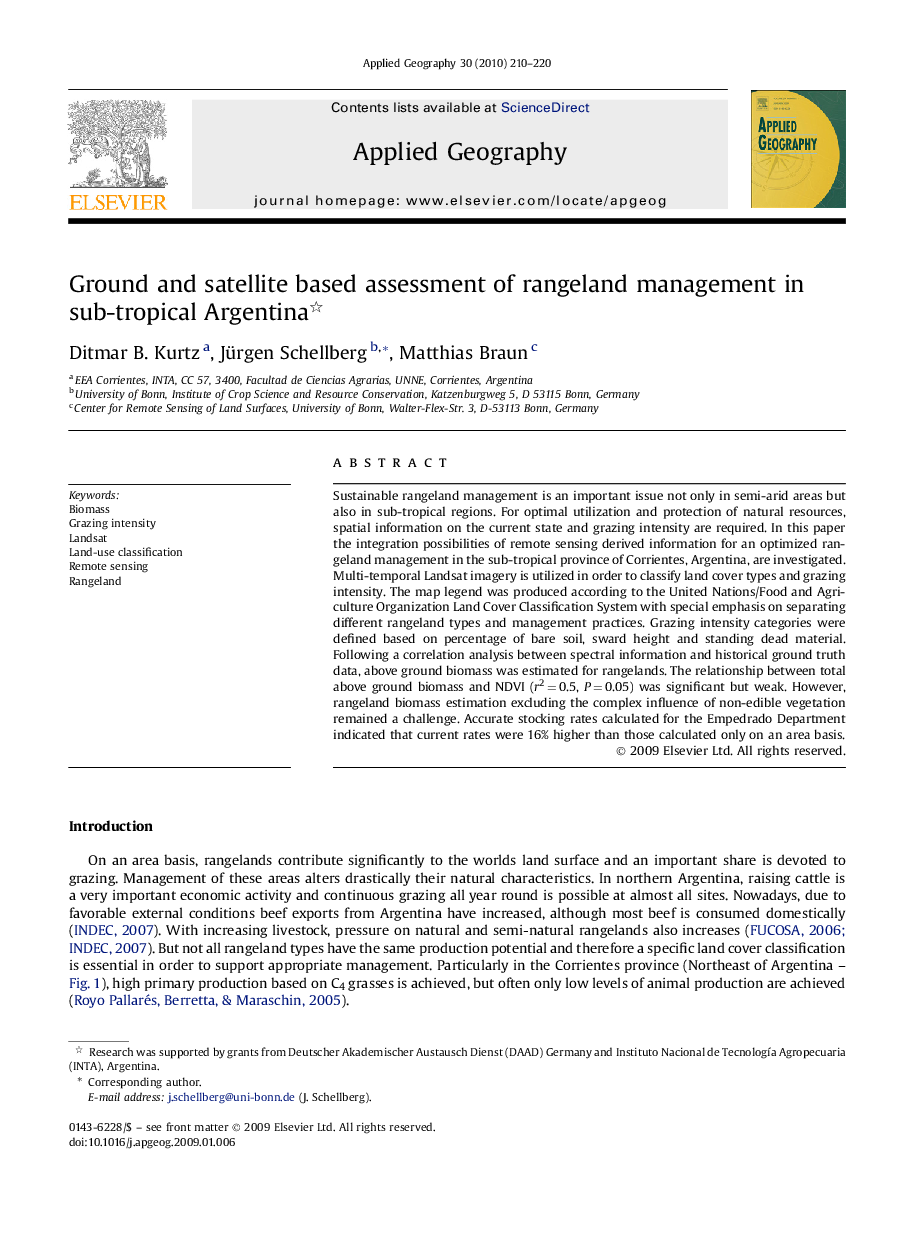| Article ID | Journal | Published Year | Pages | File Type |
|---|---|---|---|---|
| 83693 | Applied Geography | 2010 | 11 Pages |
Sustainable rangeland management is an important issue not only in semi-arid areas but also in sub-tropical regions. For optimal utilization and protection of natural resources, spatial information on the current state and grazing intensity are required. In this paper the integration possibilities of remote sensing derived information for an optimized rangeland management in the sub-tropical province of Corrientes, Argentina, are investigated. Multi-temporal Landsat imagery is utilized in order to classify land cover types and grazing intensity. The map legend was produced according to the United Nations/Food and Agriculture Organization Land Cover Classification System with special emphasis on separating different rangeland types and management practices. Grazing intensity categories were defined based on percentage of bare soil, sward height and standing dead material. Following a correlation analysis between spectral information and historical ground truth data, above ground biomass was estimated for rangelands. The relationship between total above ground biomass and NDVI (r2 = 0.5, P = 0.05) was significant but weak. However, rangeland biomass estimation excluding the complex influence of non-edible vegetation remained a challenge. Accurate stocking rates calculated for the Empedrado Department indicated that current rates were 16% higher than those calculated only on an area basis.
